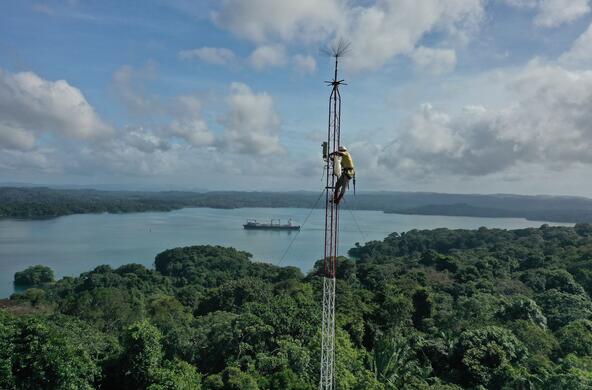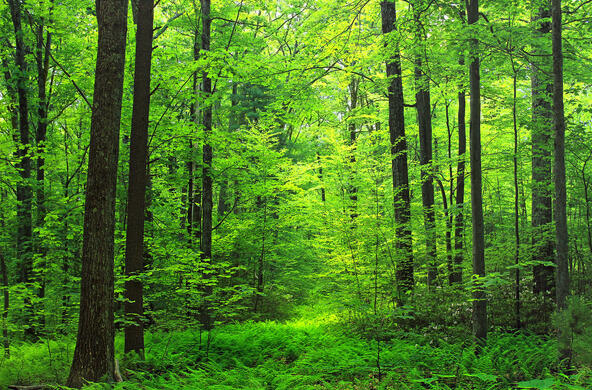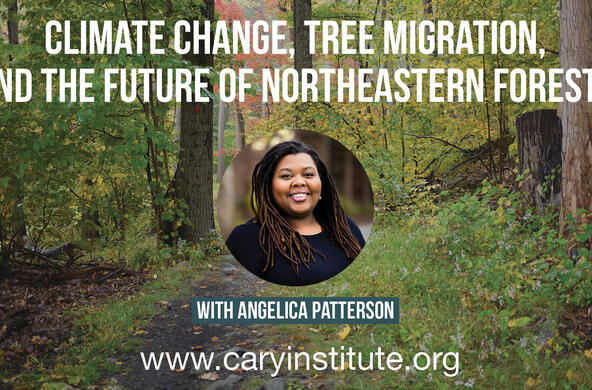It is difficult to see the rivers in the ocean. The Gulf Stream is a well-defined ocean current, which moves northward from the tropical regions of the Atlantic Ocean. On the surface, it has no obvious boundaries, like a river on land, but it carries more water than the world’s largest river—the Amazon. Early sailors noted that it took longer to get from Europe to North America than the reverse, as a result of sailing against the current of the Gulf Stream. A portion of the warm waters of the Gulf Stream is delivered to the northern North Atlantic, where surface seawater cools and sinks to the deep ocean as a function of the increasing density of cold water.
When cold waters sink in the high latitudes of the North Atlantic, they join to form deep currents that carry these waters southward, all the way to Antarctica. The formation of these waters, known as North Atlantic Deep Water (NADW), is not uniform from year-to-year and neither is the amount of these deep waters that is carried southward. This southward transport is called the Atlantic Meridional Overturning Circulation (AMOC). When the AMOC is at its peak and lots of water is moving southward, we say that the ocean is experiencing strong overturn. An international collaboration of scientists has recently installed an ocean observing system in the North Atlantic to measure the rate of conversion of surface seawater to cold, dense waters and the southward transport of those waters.
How much deep water forms, sinks, and moves southward has a dramatic influence on climate. Carbon dioxide gas dissolves more readily in cold water, so when the Atlantic overturn is greatest, the ocean takes up more carbon dioxide from the atmosphere. The Gulf Stream resupplies these waters, so during periods of strong overturning, the flow of the Gulf Stream is greatest and large amounts of warm waters are delivered northward, warming the climate of Europe. The ocean circulation affects climate, both globally and regionally. Ripening of grapes and the quality of wines from France and Spain are directly related to variations in AMOC and changes in the atmospheric circulation that are linked to the ocean.
Changes in the currents in the world’s oceans are known to have affected climate in the past, and are likely to affect climate in the future. The movie The Day After Tomorrow is filled with Hollywood fantasy, but also some thought-provoking kernels of reality. If the ocean currents were to change dramatically as a result of human-induced changes in Earth’s climate, the changes might trigger changes in the world’s oceans with huge impacts on the biosphere and human society.
References
Bower, A., S. Lozier et al. 2019. Lagrangian views of the pathways of the Atlantic Meridional Overturning Circulation. Journal of Geophysical Research-Oceans 124: 5313-35
Keffer, T., D.G. Martinson, and B.H. Corliss. 1988. The position of the Gulf Stream during Quaternary glaciations. Science 241: 440-442.
Labbe, T. et al. 2019. The longest homogeneous series of grape harvest dates, Beaune 1354-2018, and its significance for the understanding of past and present climate. Climate of the Past 15: 1485-1501.
Lozier, M.S., et al. 2019. A sea change in our view of overturning in the subpolar North Atlantic. Science 363: 516-521.
Rodo, X., and F.A. Comin. 2000. Links between large-scale anomalies, rainfall and wine quality in the Iberian Peninsula during the last three decades. Global Change Biology 6: 267-273
Weijer, W., and 9 others. 2019. Stability of the Atlantic Meridional Overturning Circulation: A review and synthesis. Journal of Geophysical Research—Oceans 124: 5336-5375.







